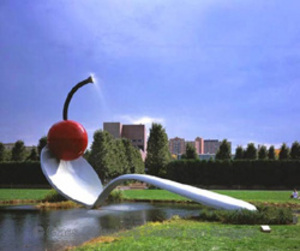My mom fractured her knee at the end of January 2008. She was at Boca Community Hospital; is 78; and has osteoporosis. When I arrived at the hospital I saw that her leg was in what is called an immobilizer. She spent 6 days in the hospital during which she complained of extreme pain in her foot. The nurses couldn’t go near her. I asked if her foot had been x rayed and it was determined that it had not been. The x rays showed no break. It was determined that she hurt her foot during the fall.
According to an article by Richard M. Stillman, MD, Honorary Medical Staff, Northwest Medical Center; Former Chief of Staff and Medical Director, Wound Healing Center, Department of Surgery, Northwest Medical Center “Pressure ulcers occur in approximately 9% of hospitalized patients, usually during the first 2 weeks of hospitalization.”
We arrived at Whitehall where she was immediately assessed as having a very bad ulcerated wound. The word ulcerated just means that her heel changed in nature. What caused this? There are many causes but it was clear that in my mom’s case the hospital never put a pillow under her foot. Since she was in an immobilizer she couldn’t lift her foot. The rubbing of heel on the sheet caused a skin tear. My mom has very thin skin. A skin tear when treated does not necessarily become ulcerated; however, when not treated – well her heel was in a horrible state. At the time I couldn’t even look. Eventually I could and basically saw she had no heel.
Whitehall had a wound team who was on top of this problem although we knew it could take months if not years to heal or it could perhaps never heal. My mom also has very poor circulation in her legs. You may be wondering if she is diabetic. The answer is no she is not.
At first it was very frightening. The team talked about the fact they could see her muscle! The team came once a week and every day at some points twice a day a nurse would change mom’s bandage and follow the protocol of the week. It initially involved antibiotics and a variety of topical creams that did help little by little by little. My mom was in incredible pain long after her knee healed and in fact this pressure wound was what kept my mom in the rehab long after she could have been released.
During the 100 days in rehab she had two different types of Silverdine, a topical treatment. The last one was the most aggressive and required that she only had her bandage changed once or twice a week. If you are in a similar situation and are not allergic to sulphur drugs, ask for Silverdine.
On at least two occasions the wound care doctor did something called debriding. The way I understood it from the wound care team was that this process done in her room removed the dead tissue around her wound so the healthy tissue could heal and grow. Essentially the doctor dug and cut the dead skin. This was not painful for her during the procedure but it was painful after the procedure. There are other protocols for other types of debriding.
My mom was given a special shoe that allowed her heal to hang over thus taking any pressure off of her heal. Even with this shoe she could not get physical therapy for her knee for three weeks due to the pain.
I took my mom back to Massachusetts when she was released from Whitehall. She saw her new primary care physician who used saline to debride her heel some more. She had a Visiting Nurse as much as twice a day when necessary. She was referred to a wonderful doctor, Dr. James, whom I give a lot of credit for where my mom is today. When her wound was healed enough he grafted skin using something synthetic. We went to see him every Thursday at which time he as the team in Florida did measured the size of the wound.
Finally on October 2, 2008 she was released from Dr. James’ care. The wound was too small for him to even measure. She is now wearing regular shoes. I am writing this for two reasons. One is to check your loved one when they are in any type of facility. Do not assume that the medical staff is doing that. The second reason is to give you an understanding of what pressure/ulcerated wounds are and to give you hope that they can indeed heal. It took my mom eight months for her heel to heal but that was better than one year.
One more note: The immobilizer tore her skin. That was not noticed right away; however, it was noticed quickly enough to heal in several weeks.




